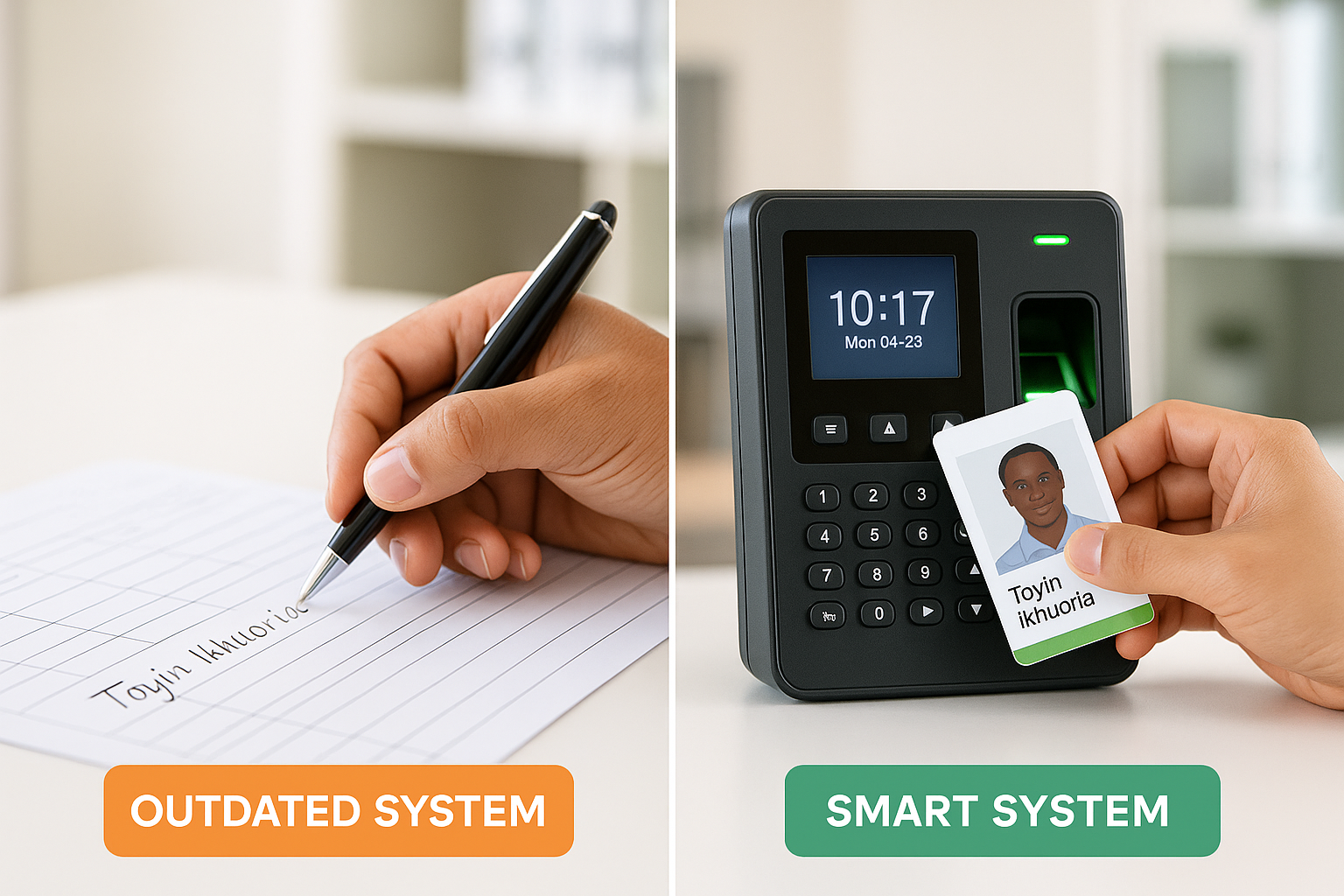In an age where automation drives efficiency, it’s surprising that many small and even large businesses in the Pembina Valley still rely on handwritten time sheets or basic punch cards to track employee attendance. These traditional systems are not only outdated but also prone to errors, time theft, and inefficiencies.
A modern time-maintenance system—integrated with biometrics or ID credentials—helps businesses save time, reduce administrative costs, and ensure accuracy in payroll and staff accountability.
The Traditional Time Register: How It Works
Most local companies still depend on paper logbooks or manual time clocks, where employees write or stamp their check-in and check-out times.
Advantages:
-
Simple to use; no technical knowledge required.
-
Low upfront cost.
-
Works even without power or internet.
Disadvantages:
-
Easy to falsify or “buddy punch” for absent employees.
-
Difficult to audit or analyze attendance trends.
-
Manual data entry increases payroll errors.
-
Time-consuming for HR or admin staff.
-
The Smart Time-Maintenance System: A Modern Upgrade
A digital time-maintenance system uses electronic credentials or biometric data to log attendance automatically. It can integrate with payroll, HR, and access control systems for seamless operations.
Common Methods & Their Features:
Method Description Pros Cons ID Card / Badge Uses a proximity or RFID card. Can also serve as the employee’s access card. Quick and contactless. Easy to integrate with doors or gates. Cards can be misplaced or shared with others. Fingerprint Recognition Identifies users by unique fingerprint patterns. High accuracy, prevents “buddy punching.” Some people have unreadable prints (e.g., worn fingers, dirt). Face Recognition Captures employee face at entry. Fast, hygienic, hands-free. Works well with masks off. Needs good lighting; some employees may have privacy concerns. Palm / Vein Scan Reads vein or palm geometry. Very accurate, contactless. Great for hygiene. Higher hardware cost. Mobile / App Check-In Uses a smartphone app with GPS or QR code. Great for remote workers or multiple sites. Requires consistent internet and phone access. Local Integration Possibilities
For Pembina Valley companies that already issue complementary staff ID cards, those cards can double as attendance credentials with an RFID reader system.
Alternatively, companies can integrate biometric readers (face, finger, or palm) at key entry points. These systems can connect to a secure cloud platform to track attendance, overtime, and work hours automatically.Bonus Advantage: These same devices can also serve as access control systems, keeping unauthorized people out of restricted areas—offering double value for one investment.
Why Local Businesses Should Act Now
As businesses grow, so does the cost of inefficiency. Delayed payroll processing, attendance disputes, and manual errors all translate into lost productivity.
With smart time-maintenance systems:-
You save administrative time.
-
You reduce errors and potential disputes.
-
You gain visibility into staff attendance and punctuality.
-
You strengthen workplace accountability.
Modern systems are affordable and scalable—ideal for schools, warehouses, factories, offices, and retail outlets across Morden, Winkler, Altona, and beyond.
Conclusion
Time is one of your company’s most valuable assets. Relying on outdated attendance methods is like using a flip phone in a smartphone world. A smart time-maintenance system not only saves time but builds trust, accuracy, and professionalism across your entire organization.
At Mitobi, we provide complete Time-Attendance and Access Control Solutions tailored to the needs of Pembina Valley businesses—integrating ID, fingerprint, face, or palm recognition technologies to fit your workflow and budget.
📞 Contact us today for a free site evaluation and system recommendation.
-

